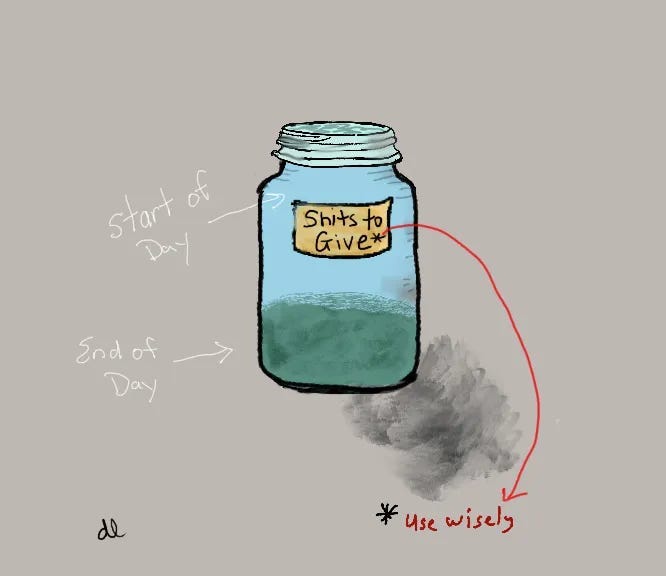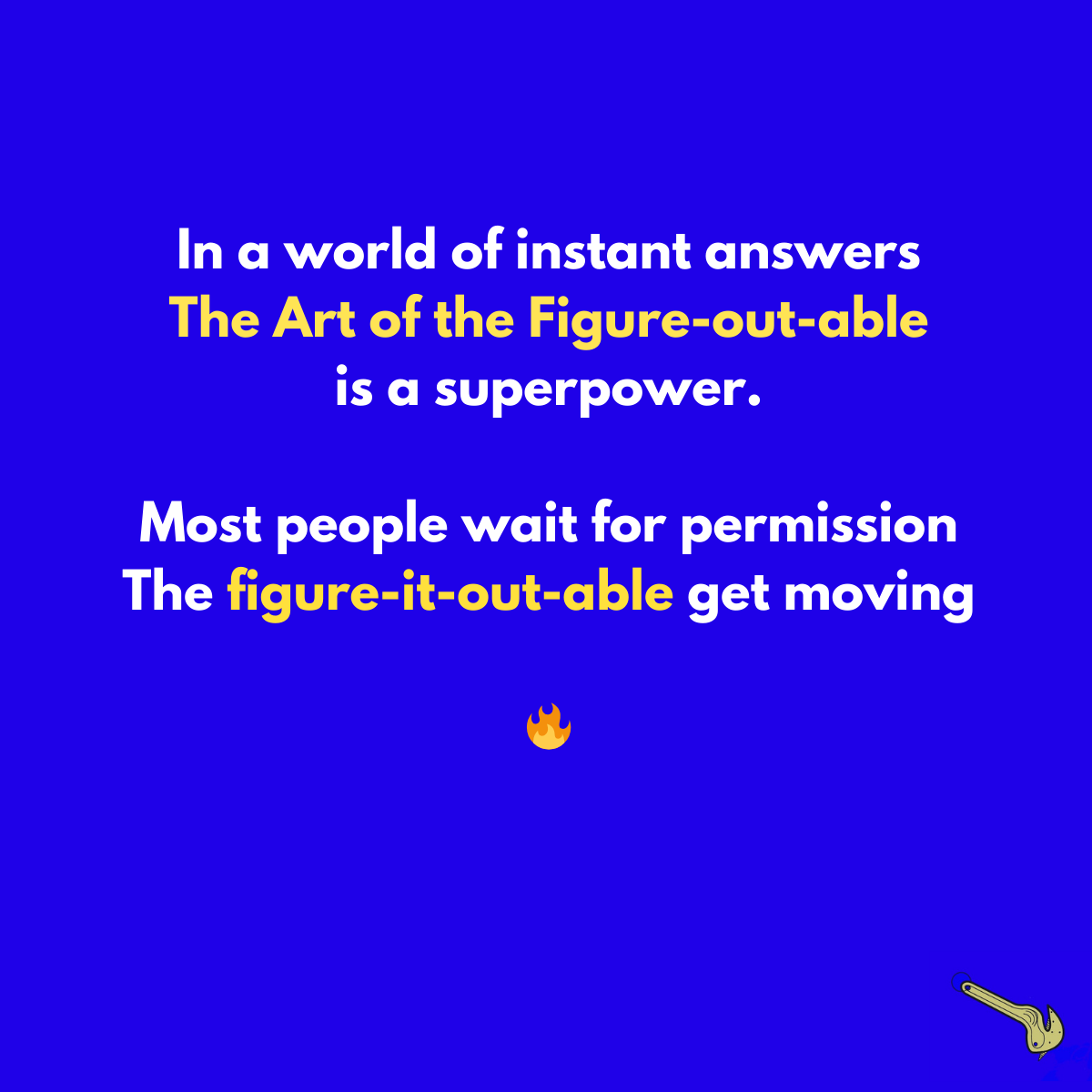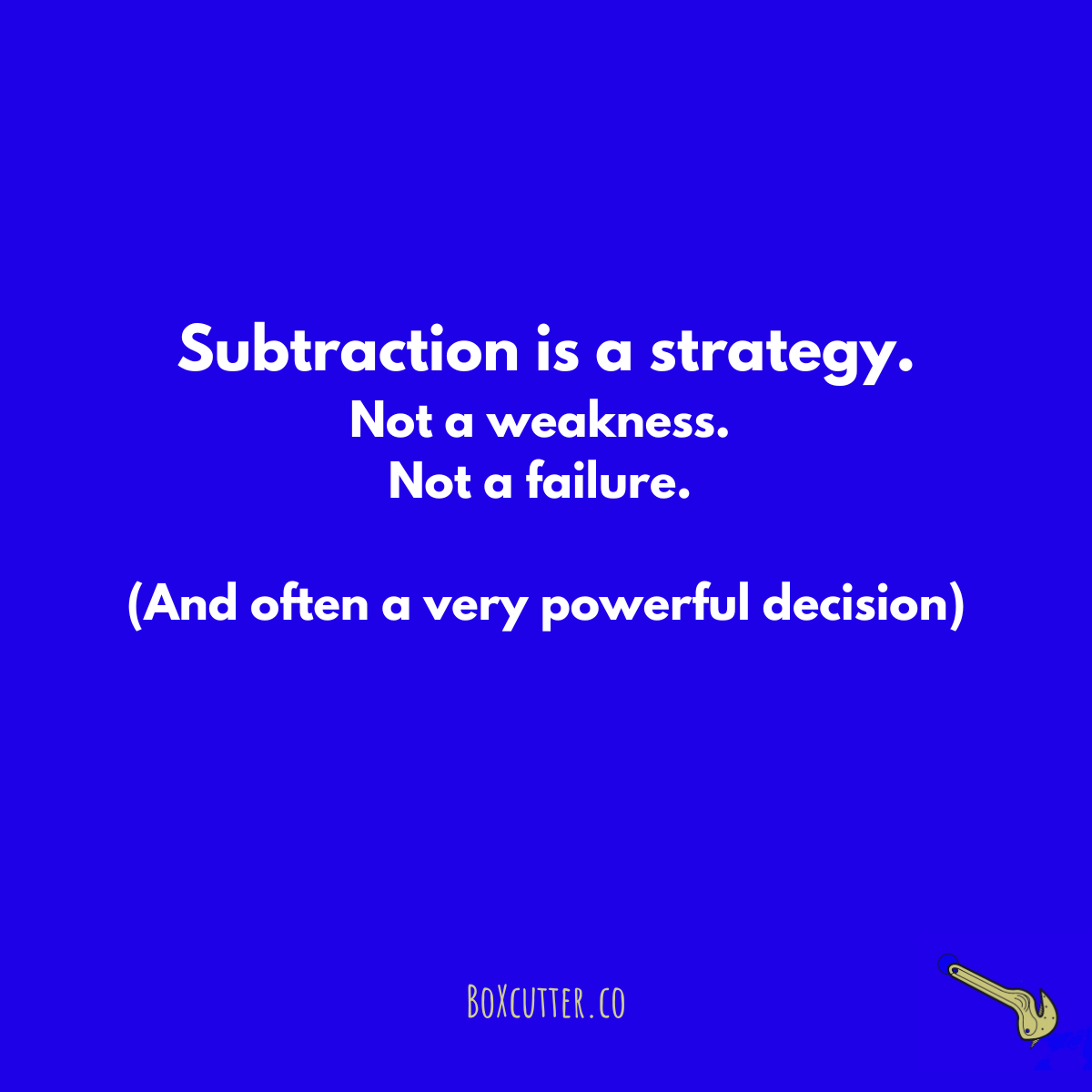How 'Durable Creativity' Beats Hustle (And Avoids These 3 Mental Traps)
Box Cutter Co. Free Issue No. 88
We love success stories. We obsess over them.
Billion-dollar startups. Best-selling books. Viral threads.
They’re celebrated, dissected, emulated, and held up as blueprints. “The way!”
The problem?
But most success stories create illusions. They become our false guidebooks, maps, yardsticks, and our internalized pressures and false signposts.
These success stories rarely reveal the whole picture.
And without realizing it, many creatives start building from distorted assumptions and beliefs.
After three years of building creative businesses (from scratch), I’ve seen how three particular invisible forces quietly sabotage creative momentum and stability:
👉 Survivorship Bias — you’re only seeing the winners
👉 Decision Fatigue — too many choices erode clarity
👉 The Paradox of Choice — too much freedom creates paralysis
These forces don’t just shape your strategy. They shape your stamina. And they might be slowing you down more than you think.
Let’s unpack these three traps.
1. Survivorship Bias
Survivorship bias means noticing only the winners. It’s missing the thousands who tried similar things and didn’t make it. The illusion is dangerous but straightforward:
“If I simply follow the same playbook, I’ll succeed too...”
In “The Creator Economy,” this path has left countless others frustrated, broke, and burned out. And, we rarely hear their stories.
Survivorship bias doesn’t mean success is impossible. It means the data is often incomplete.
If your creative business decisions rely solely on what’s public and celebrated, you’re operating on a dangerous sliver of reality.
This illustration represents a classic example of survivorship bias.
During WWII, engineers studied where returning bombers were hit to decide where to add armour.
At first, they focused on the areas with the most bullet holes. However, statistician Abraham Wald pointed out the backward flaw in thinking, as they were only analyzing surviving planes.
The missing data was the planes that didn’t make it back. These showed where armour was truly needed (e.g. the engines and cockpit).
It’s a powerful reminder: what we don’t see often matters more than what we do.
2. Decision Fatigue
Here’s another sneaky trap: decision fatigue.
Every decision costs energy — mental, emotional, strategic. The more decisions you make, the worse they become. In creative work, where the choices are endless, this gets exhausting.
What to write.
Where to publish.
What to say ‘yes’ to.
Three years ago, when I started building my creative enterprises, I didn't fully realize the drain of decision fatigue. I was tired — not from the work (it was full of excitement)— but I got worn down from the constantweight of options.
So I started doing something unsexy: Making fewer decisions by deciding ahead of time.
I created personal rules, such as:
When and how I write.
What projects I say “yes” to (it’s very few)
What platforms and strategies I don’t chase.
Fewer choices = more energy for the right work.
3. The Paradox of Choice
Then there’s the paradox of choice — maybe the subtlest trap.
We often think freedom means more options. Yet, creativity thrives on constraints.
Too many options = decision paralysis.
It’s easy to get stuck researching, tweaking, delaying — instead of choosing a direction, going, shipping — pushing “publish.”
The result?
Confusion. Half-built projects.
‘Progress’ that actually feels like treading water.
What can change this?
Deciding once, clearly — and letting other options die. No more waffling. No more panic-pivoting.
Here’s how some of this has worked in my creative endeavours.
From Career Ladders to Creative Business
Three years ago, I walked away from corporate public sector employment. I was steadily moving up the career ladder, but in early 2022, I chose to step off it — cold turkey.
After more than ten years in the public sector (healthcare and higher ed), I’d earned a master’s and a doctorate, was included in regular conversations about “succession planning”, and had almost tripled my salary.
When I walked away from all that, plus the healthy, steady salary — with three kids, a mortgage, vehicle payments, etc. — I had no clients lined up. We had no financial runway.
We had a simple, but powerful belief in: The Art of the Figure-out-able.
I knew I wanted to build something more values-aligned, more creative, and more resilient.
I aimed to build inside what’s called “The Creator Economy” — a sector Goldman Sachs estimates at over $250 billion US of activity annually (with estimates it will double by 2027).
I called part of my creative enterprises: Box Cutter Co.
However, I quickly ran into a lot of noise. Endless strategies. Growth hacks. “How I hit 10,000 followers in 8 weeks” playbooks. Every week, a new promise. Every success story louder than the last.
And for a while, I chased them. But the deeper I built, the more obvious it became:
The loudest paths rarely lead to sustainable creative businesses.
The people who endure don’t chase viral hits — they build systems.
That’s when I started watching the quieter ones.
The ones still publishing, still iterating, still aligned after two, five, maybe even ten years. Or someone like Seth Godin, who’s been posting daily for two decades.
Success, I realized, isn’t constant visibility. It’s durable creativity. And to build this, one needs to avoid falling to survivorship bias and other biases.
“Durable Creativity”
These traps — survivorship bias, decision fatigue, and the paradox of choice — aren’t just abstract concepts. They can shape how (and whether) you build something lasting, durable, and sustainable.
They are why I now frame my creative work around what I call: Durable Creativity, which is:
Growth not measured in noise, but in quiet persistence
Creativity not built on viral tactics, but resilient systems
Strategy not driven by scarcity, but by self-awareness and subtraction
The longer I’m at this, the more I recognize: Creative lives aren’t the loudest. → They’re the clearest.
Try This
Here’s a practical way to test these ideas for yourself. Grab a notebook or open a blank doc. Write your answers to these three questions:
Where am I mistaking success stories for reliable blueprints?
What daily decisions am I repeating unnecessarily, draining my creativity?
What one clear choice could I make today to eliminate dozens of others in the future?
You might be surprised how fast clarity follows subtraction.
Levelling-Up With Creative Infrastructure
We’re taught — or cajoled — to admire those who scale fast.
But creative business is rarely about speed. I’ve found it’s often about building systems you can live with — and grow from — persistently.
I have found it’s often about developing systems you can live with and continue to build upon. Creative infrastructure.
It’s about building practices and systems that don’t fall apart when life gets messy and uncertain. And it’s about choosing constraints sustaining your best creative work.
The longer you stay in the game, the more leverage your creativity earns — Not through viral spikes, but through friction-tested, durable creativity.
If you’d like to learn more about a fantastic tool to support creativity, our course:
Is still open for Free enrolment. There’s an intro video at this link above. No spam, no catch. Just solid content (and I’d love to hear your feedback).
Thanks for being here. Thanks for reading.
Have a question or comment? Please drop it here. Like what you read? Consider sharing it. 👇







Good stuff here. Kudos to you for stepping away from corporate/ed and into self-employment. It sounds like you’re on the right path. BTW, Marie Forleo wrote a great book called Everything Is Figureoutable.
Durable Creativity, so that's what I've been doing all these years.
Subtraction as a strategy. I've always made choices in life based on what I do not want to do. That way everything else is headed in the right direction. And you don't need an exact answer, just move forward.